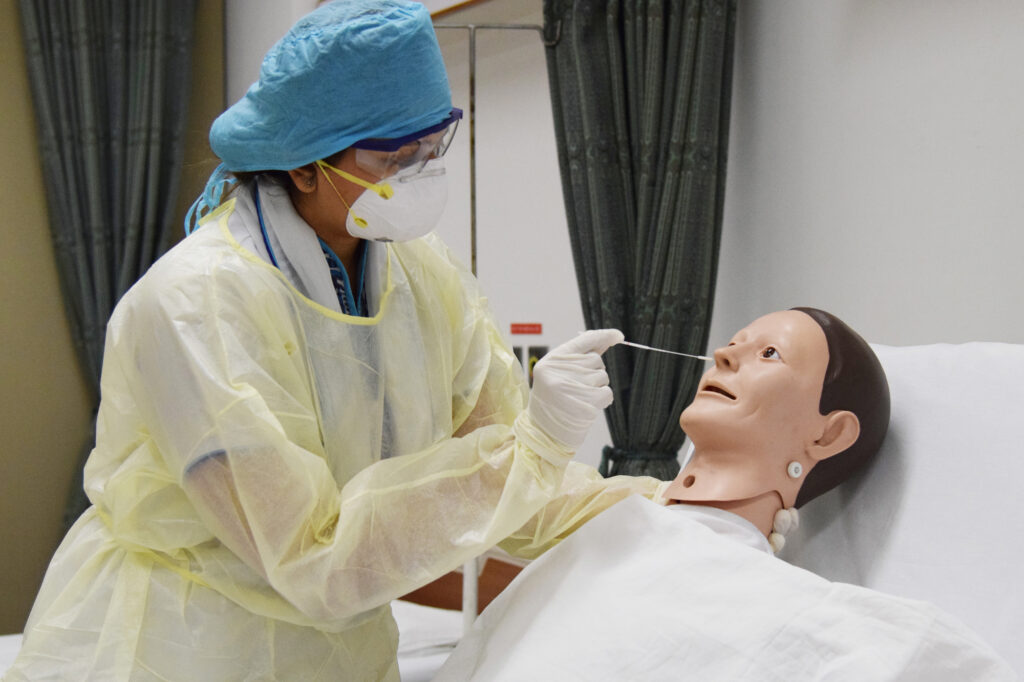Muhammad Sohaib Rehmani
As the world goes through a pandemic, there have been talks about how things would change after all of this is over. Two lessons that the developed and developing world have learnt during this crisis: there is no health unless there is healthcare for everyone. And secondly, protecting healthcare is as important for protecting the economy as it is for saving human lives. Therefore, we need to reflect on how we can change in the world in the post COVID-19 situation.
Talking from the Pakistani perspective, we have always spent very little of our budgetary resources on healthcare. Successive governments have decreased annual spending on public health. The state’s poor investment in this sector has led to a weak system and a vulnerable population.
There are primarily two aspects how governments can spend on health. The first is spending on hospitals, clinics, laboratories, health programs including the vaccination programs and so on. The second is the spending on training of postgraduate doctors, medical students, nurses and the paramedical staff and investing in the field of research. The first aspect speaks more about the quantity of healthcare facilities in an area, and the second one the quality of healthcare. Our governments can boast to have built several hospitals during their tenure of rule but the quality of care these hospitals provide is as important as their existence in the first place. I’ll be shedding some light on both aspects.
Pakistan ranks 122 out of 190 countries on the World Health Organisation healthcare performance report. It has 0.6 hospital beds, 1 physician, and 0.5 nurses for every 1,000 people. Developed countries have a significantly higher ratio. The necessary equipment is mostly present in bigger hospitals, but when something stops working or needs repair, it takes a lot of time before it is fixed. Smaller health units have a different story: they are understaffed and mostly do not have proper equipment. There are other deeper issues pertaining to this aspect but as a medical student in study, I am focusing more on the quality part.
Coming to medical colleges, we see a lot of problems, and most of them are due to lack of spending. In Allama Iqbal Medical College, a lot of work – for example renovation of the library – is done by a Lahore-based philanthropist. By contributions from our old graduates, air conditioners were installed in our lecture halls last year. The principal, while talking to our class on an informal note once said, “Hakoomat nay toh medical colleges say haath utha liay hain, humsay jitna ho sakta hai hum karte hain’ (The government has reduced our college budget, we do as much as we can).
The quality of education in government medical schools, which are a total of 44 in the country, is disappointing. We are still stuck with decades-old curriculum, with our first two out of five years entirely spent on an out-dated basic science curriculum with little practicality in clinical settings.
The next two years are spent mostly in colleges, too, studying traditional books. Only the last year is solely devoted to hospital settings and hands-on clinical experience. The top rated medical college in the country, Aga Khan, has long shifted to the modular system of education in which they teach the anatomy, physiology and pathology of an organ all at once, correlating basic sciences with its clinical application. When government medical schools teach pathology in fourth year of an organ whose anatomy students studied in first year, there is little correlation due to the natural reason that one’s grip on particular facts weakens with time. This results in students having to struggle with studying more extensively all over again to build concepts, which results in wastage of time and burnout.
Although students have a lot of patients to learn from in government hospitals, there is a problem of proper teaching there. This is mostly because there is a shortage of doctors and the ones that are present are busy dealing and treating patients. Despite the fact that world is investing a lot on research, our governments don’t take any interest and hence the few researches that doctors here manage to get published internationally, are managed by funds arranged by themselves.
This pandemic is an opportunity for us to reconsider our spending in the medical field. Because without good quality and number of hospitals and doctors all of us have a bleak future.
The Students’ Herald News Desk focuses on reporting the latest news regarding student politics and campus updates to you.
The News Desk can be reached at admin@thestudentsherald.com




